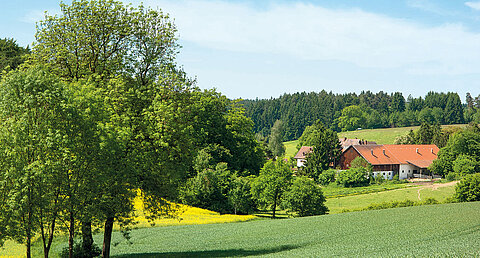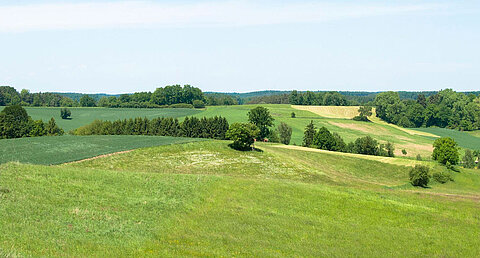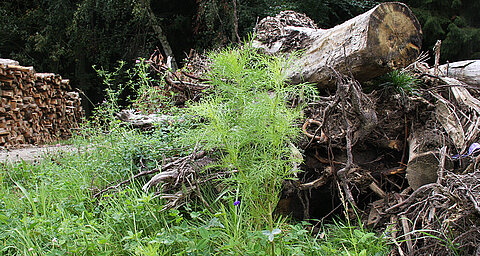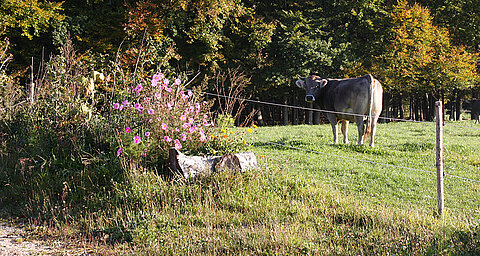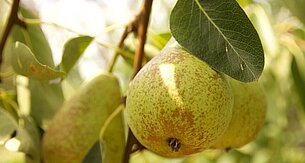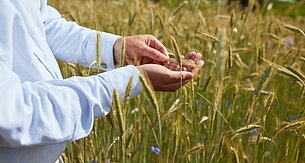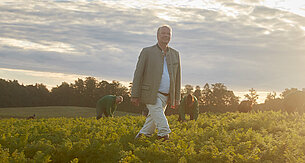The Ehrensberger Farm
The Ehrensberger Farm for biodiversity
At the remote Ehrensberger Farm, HiPP tries out environmental measures for improving biodiversity. The aim is to work this organic farm in a sustainable and effective way as a model business. In the future it is intended as a model for HiPP producers.
We want to show how sustainability and protection of biodiversity can be incorporated into a farm’s daily routine.
Cultivated land plan and collection of scientific data
The natural determining factors for the location of farms and farmland produce concrete suggestions for the improvement of species diversity and nature conservation. On this project we are working together with Bioland, Munich Technical University and Hanover Technical University, as well as the Bavarian Council for Bird Protection.
In order to increase species diversity, rare old breeds have found a home on the farm: original Braunvieh cattle, of which there are only 500 animals left in Bavaria, Skudde sheep (currently 1000 animals in Germany) and the old chicken breed Appenzeller Spitzhauben.
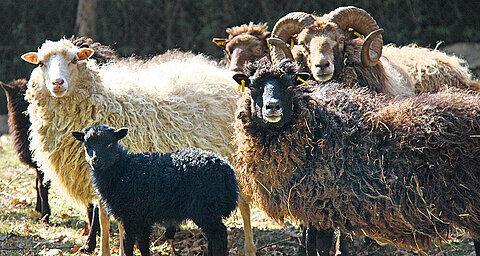
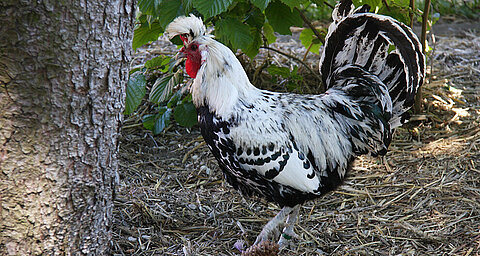
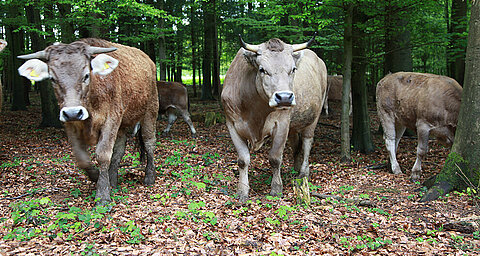
According to the Red List of threatened farm animals, the original Braunvieh cattle are “much endangered”. On the Ehrensberg farm, HiPP’s model project for sustainable farming, this breed is kept appropriate to its species. The original Braunvieh cattle descended from the so-called Torfrind cattle, which were grazing by the lakes on the edge of the Alps well over 2,000 years ago.
Original Braunvieh cattle
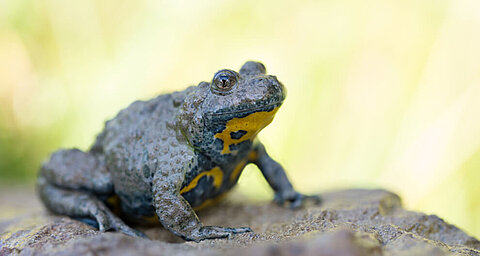
Together with the Bavarian Council for Bird Protection (LBV), the Ehrensberg farm has carried out various reintroduction projects to re-settle animals such as pheasants, barn owls, the yellow-bellied toad and the minnow.
Yellow-bellied toad
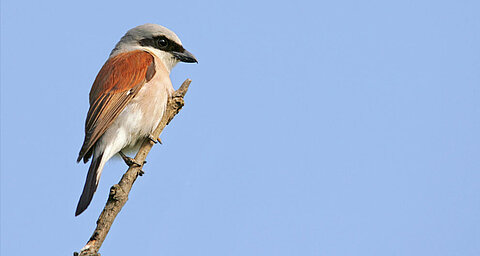
The red-backed shrike is an important species for an intact ecosystem. Due to intensive farming there are fewer hedges and bushes as a natural habitat for birds. It already belongs on the endangered species list. This rare bird is best known for spearing its victims on thorns. According to popular belief, it always collects nine insects before eating them. HiPP has created new habitats for the red-backed shrike on the Ehrensberg farm and as apprentice initiatives has set up deadwood hedges (branches and twigs) at the edges of fields.
Shelter for endangered animals
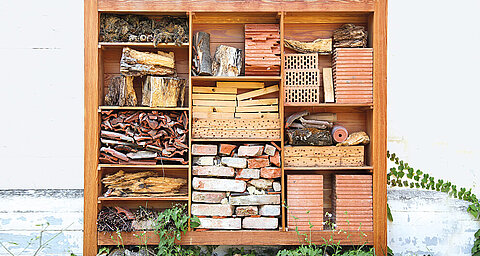
An insect hotel and a sand lizard shelter are designed to compensate for the lack of natural homes for these animals. Nesting boxes were also distributed around the farm, because there is a lack of natural holes for owls, starlings, house martins, sparrows, tits, falcons and bats.
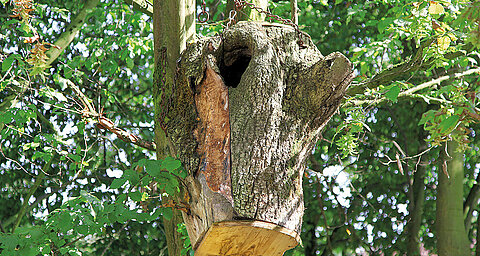
These nesting boxes made out of natural logs should provide kestrels or tawny owls with a breeding place. These days, unfortunately, it is usual to clear deadwood (natural nesting spots for many birds) out of forests. This is why the nesting boxes are offered as an alternative.
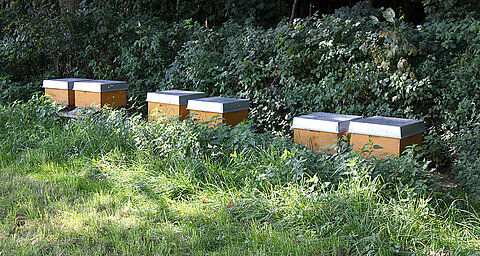
Many people could live without honey, but not without bees. The insects not only deliver sweet spread for bread but above all pollinate flowers. In doing so, they secure the existence of plants and ensure good crops for the farmers. Without these animals, the fruit harvest would be in danger. When bees die or are ill, it affects us all. This is why HiPP is also involved in the preservation of natural habitats for bees with biodiversity projects. The Ehrensberg farm is now also home to six bee colonies, established as a reaction to the dramatic collapse of bee populations.
New ecosystems such as rows of trees, protective hedgerows (e.g. for the red-backed shrike), deadwood hedges, rootstocks and flowering strips at the edges of fields and in the meadows were created to offer habitats to reptiles, birds, small mammals and insects. The principle of deadwood hedges is not to create new hedges by planting them, but to let them be created by wind and seed flight. Branches, twigs and sticks are piled up as a loose wall, which also provides protection for growing plants. The advantages of such constructions are, one the one hand, the low construction costs and, on the other hand, the loosely piled deadwood offers a home to numerous rare species.
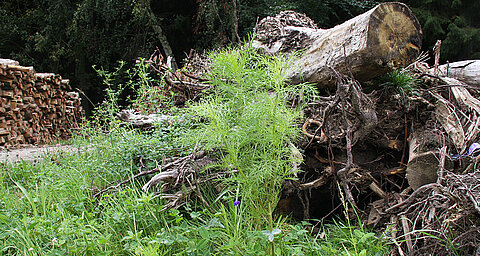
In conventional farming, the fields and meadows are planted right up to the edge of the forests, for more yield. To support biodiversity and sustainability, we plant wild hedgerows with deadwood and native wild flowers. These provide the animals with a place to live, offer the cattle protection from the wind and reduce soil erosion.
Improving soil quality
Concerning the improvement of soil fertility, different methods have been tried out in the model project, for example using rock flour to bind ammonia, solid manure fertilization and other natural methods. Also, measures to support animal health, such as using effective micro-organisms or organic straw as litter, are used.

